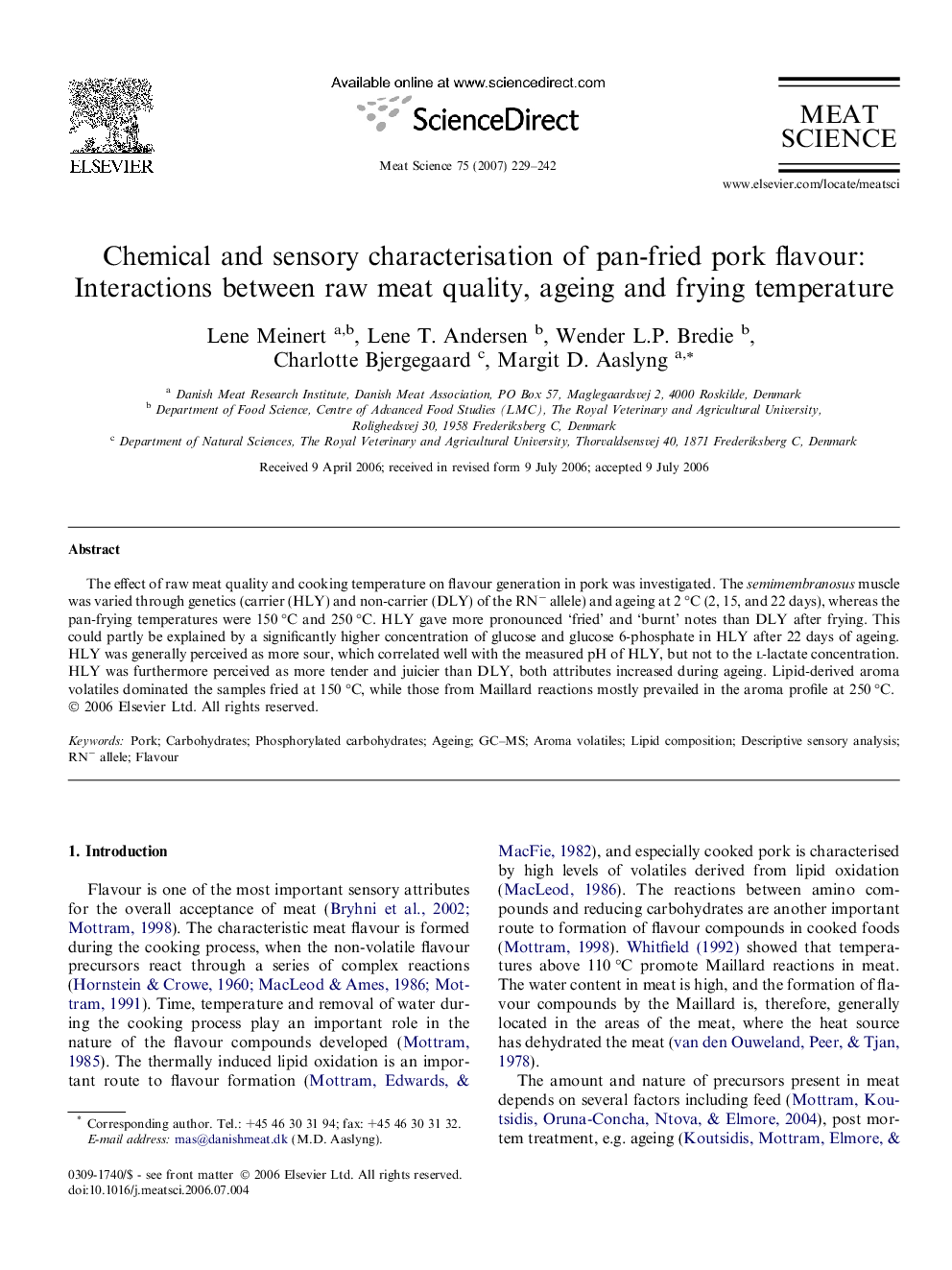| Article ID | Journal | Published Year | Pages | File Type |
|---|---|---|---|---|
| 2452071 | Meat Science | 2007 | 14 Pages |
The effect of raw meat quality and cooking temperature on flavour generation in pork was investigated. The semimembranosus muscle was varied through genetics (carrier (HLY) and non-carrier (DLY) of the RN− allele) and ageing at 2 °C (2, 15, and 22 days), whereas the pan-frying temperatures were 150 °C and 250 °C. HLY gave more pronounced ‘fried’ and ‘burnt’ notes than DLY after frying. This could partly be explained by a significantly higher concentration of glucose and glucose 6-phosphate in HLY after 22 days of ageing. HLY was generally perceived as more sour, which correlated well with the measured pH of HLY, but not to the l-lactate concentration. HLY was furthermore perceived as more tender and juicier than DLY, both attributes increased during ageing. Lipid-derived aroma volatiles dominated the samples fried at 150 °C, while those from Maillard reactions mostly prevailed in the aroma profile at 250 °C.
